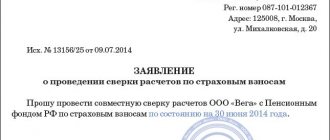Initial stage of merger
A merger is a form of reorganization in which several companies cease to exist as separate legal entities and merge into one, larger organization.
The sequence of steps that must be taken in the first stage of a merger is the same as in other forms of reorganization. We have listed all the necessary steps in the table.
Actions to be taken at the initial stage of the merger
| No. | Action | Who commits | Deadlines |
| 1 | Decide on merger | Owners | By decision of the owners |
| 2 | Send the decision on the merger to the “registering” Federal Tax Service and attach a written message about the reorganization | The company that last decided to merge | Within three business days after the date of the merger decision. Next, the Federal Tax Service will make an entry in the state register about the start of the reorganization |
| 3 | Inform the Pension Fund and the Social Insurance Fund in writing about the upcoming reorganization | Each company involved in the merger | Within three working days after the date of the merger decision |
| 4 | Notify all known creditors | Each company involved in the merger | Within five working days from the date of filing the application with the Federal Tax Service |
| 5 | Publish a notice of reorganization in special publications on behalf of all participants | The company that last decided to merge | Twice at intervals of once a month |
| 6 | Prepare the constituent documents of the organization created by merger | Persons responsible for the reorganization | No deadlines set |
| 7 | Conduct an inventory of property and liabilities | Each company involved in the merger | Immediately before drawing up the transfer deed |
Reorganization by merger: features
For most organizations, the legislation does not contain prohibitions on reorganization through merger, i.e. it can be carried out by any legal entity. But in certain cases, reorganized companies need to obtain approval from the antimonopoly authority. For example, if the total value of the assets of all participants in the reorganization exceeds 7 billion rubles, or their total revenue for the year preceding the merger exceeded 10 billion rubles (Clause 1, Article 27 of Law No. 135-FZ of July 26, 2006 “On the Protection of Competition” ). There are no restrictions on the number of legal entities participating in the merger. In practice, most often a merger is carried out by two or three companies.
Transfer deed
The next step is preparing the transfer deed. Each company participating in the merger must draw up this document. The date of the transfer deed can be any. But it is better that it coincides with the end of the quarter or year - as stated in paragraph 6 of the Instructions for the formation of accounting records during reorganization *.
The transfer deed must contain provisions on legal succession (Article 59 of the Civil Code of the Russian Federation). This is information about the amounts of receivables and payables, as well as about the property transferred to the newly created company. The value of the property under the transfer deed can be market, residual, initial, or corresponding to the actual cost of inventories (clause 7 of the Instructions for the formation of accounting records during reorganization).
There are no restrictions on the form of the transfer deed. Most often, it is drawn up in the form of an ordinary balance sheet and transcripts are attached for each of the lines. Inventory sheets can be used as transcripts. There is another option: abandon the balance sheet form, and simply list all types of assets and liabilities (fixed assets, intangible assets, “debtor”, “creditor”, etc.) and indicate their value. And in separate appendices, provide lists of objects, debtors, etc. (example examples of the transfer deed can be downloaded here or here).
Reorganization of institutions: legal framework and accounting
The form of notification of the start of the reorganization procedure (form R12003, code 1111514 according to the KND) is established by Order of the Federal Tax Service of the Russian Federation dated January 25, 2012 No. ММВ-7-6/ [email protected]
The status of settlements with counterparties, reflected in the inventory lists, should be confirmed by reconciliation reports.
The transfer of indicators of off-balance sheet accounts is carried out without the use of double entry (clause 332 of Instruction No. 157n[4]).
Planned assignments were adjusted by return correspondence (clause 177 of Instruction No. 174n, clause 206 of Instruction No. 183n)
Accepted obligations were adjusted using the “red reversal” method (clause 167 of Instruction No. 174n, clause 196 of Instruction No. 183n)
Planned assignments were adjusted by return correspondence (clause 171 of Instruction No. 174n, clause 203 of Instruction No. 183n)
Order No. 24n establishes a procedure for closing personal accounts of reorganized institutions, both participants and non-participants in the budget process.
Let us present the features of indicators of reporting forms during the reorganization of non-participants in the budget process in the form of a table.
Period until completion of merger
Then you need to prepare documents for the reorganization. This is a deed of transfer, an application for registration of a company created by merger, a decision on reorganization, a document on payment of state duty, etc. The full list is given in paragraph 1 of Article 14 of Federal Law No. 129-FZ dated 08.08.01.
The package of documents should be brought to the “registering” Federal Tax Service and wait until the inspectors make an entry in the Unified State Register of Legal Entities. With the advent of this entry, the predecessor companies will cease to exist, and a new successor organization will appear in their place. But until the waiting period is completed, the predecessors continue to work: they calculate wages, depreciation, register the “primary”, etc.
Submitting documents to the Federal Tax Service Inspectorate
When registering a limited liability company created in the process of reorganization of an enterprise in the form of a merger, the Inspectorate of the Federal Tax Service, on the basis of decisions on state registration of the company created through reorganization in the form of a merger, and state registration of termination of the activities of reorganized limited liability companies:
- makes an entry in the Unified State Register (USRLE) about the creation of a new organization and the termination of the activities of previous companies;
- reports the termination of the activities of reorganized limited liability companies to the tax authorities at their location;
- sends copies of the decision on state registration of termination of the activities of reorganized limited liability companies, an application for registration of a new organization and an extract from the Unified State Register of Legal Entities;
- issues to the applicant documents indicating that an entry has been made in the Unified State Register of Organizations;
- reports registration by reorganization of a legal entity to the tax authority at the location of the newly created limited liability company and sends the registration file of the enterprise there.
Final financial statements of predecessor companies
Each company participating in the merger must prepare final financial statements as of the date preceding the date of entry into the Unified State Register of Legal Entities about the reorganization. The statements consist of a balance sheet, profit and loss account, statements of changes in equity and cash flows, an explanation and an auditor's report (if the company is subject to statutory audit).
The final accounting statements must reflect transactions performed during the period from the signing of the transfer deed to the closure of the predecessor organization. Because of these transactions, the indicators in the final balance sheet will not coincide with the indicators in the transfer act.
In addition, each predecessor company must close account 99 “Profit and Loss”. Profits can be distributed according to the decision of the founders.
After the final reporting, predecessors do not have to submit balance sheets and other documents, since the last reporting period for them is the time from the beginning of the year to the date of merger.
Purposes of the merger
During a merger, the new legal entity already has specific rights and obligations that the company received from each participant in this procedure. Sometimes a merger acts as an alternative to liquidation.
But if carried out correctly, a merger is an excellent tool for business development, as a result of which the assets of enterprises are combined and the shares of their founders in the new company are distributed.
The merger of companies gives:
- Addition to the existing assets of the merging companies;
- Financial savings due to cost reduction;
- Reduced competition in the market.
- Can be considered as an alternative to bankruptcy, especially during a crisis.
Inaugural reporting of a newly created organization
An organization created as a result of a merger must draw up introductory financial statements as of the date on which an entry about the reorganization is made in the Unified State Register of Legal Entities. The lines of the opening balance will contain the sum of the corresponding indicators of the closing balances of predecessors. The exception is mutual settlements between predecessors - for example, when one of them was a borrower and the other a lender. Such indicators are not summed up, since if the debtor and creditor coincide, the obligation terminates. Also, in the introductory statements of the assignee, there is no need to summarize the data from the profit and loss statements of the reorganized companies.
Particular attention should be paid to the authorized capital of the successor organization. If it is less than the amount of capital of predecessors, then the difference is reflected in the balance sheet in the line “Retained earnings (uncovered loss).” If the legal successor’s capital is greater than the amount of capital before the reorganization, such a difference does not need to be shown in the balance sheet. In both cases, the accountant does not make any entries.
The introductory report must be submitted to the Federal Tax Service either immediately after registration or at the end of the current quarter - depending on what is more convenient for your inspector.
"Primary" in the transition period
After the merger, the newly created contractual relations of the reorganized legal entities. But the agreements themselves are still concluded on behalf of their predecessors. The question arises: is it necessary to sign additional agreements to replace the parties to the transaction? Or can you simply send information letters to counterparties that indicate the name and details of the successor company?
We believe that additional agreements are not necessary, because all the rights and obligations of each of the predecessor companies are transferred to the newly created organization under the transfer deed (clause 1 of Article 58 of the Civil Code of the Russian Federation). This also applies to contractual relations. This means that to continue cooperation with suppliers and clients, an extract from the Unified State Register of Legal Entities and a transfer deed are sufficient.
As for invoices, certificates of work performed and invoices, before the date of merger they are issued on behalf of predecessors, on the date of merger and further - on behalf of the successor.
Types of mergers and acquisitions of companies
There are several types of mergers and acquisitions:
- Horizontal, in which two identical companies with the same business merge. This process reduces competition in the market.
- Vertical, in which companies do business in the same industry and have a similar specialization. This usually leads to the creation of a new monopoly.
- As a result of a mixed merger, companies from different industries come together.
A takeover refers to a merger in which one company buys a major stake in the authorized capital of another company.
Who submits declarations for reorganized companies
If possible, predecessor organizations must report all taxes before the merger, that is, before making an entry in the unified state register. But in practice, as a rule, they do not have time to do this. Then, the very next day after the reorganization, inspectors at the place of registration of the predecessor refuse to accept declarations. In this case, all tax reporting will have to be submitted to the newly created organization to its inspectorate. If, after the reorganization, mistakes of the predecessor are discovered, the successor submits a “clarification” for him.
Please note: the deadline for submitting declarations will not be shifted due to the reorganization. For example, for income tax for the year, the successor is required to report no later than March 28 of the following year - both for himself and for each predecessor.
Terms of reorganization or liquidation
The legislation establishes a transition period of 5 years, which is necessary for state unitary enterprises and municipal unitary enterprises to reorganize, that is, transfer to another organizational and legal form, without loss of jobs. Deadline: until 01/01/2025. Similarly, provision is made for the liquidation of municipal unitary enterprises until 2025 if their re-registration is inappropriate. The creation of new municipal and state unitary enterprises is already prohibited. In addition, their activities in the commodity markets of the Russian Federation are prohibited if the organization’s revenue from competitive activities exceeds 10% of total revenue for the last calendar year.
ConsultantPlus experts have prepared recommendations for re-registration of a municipal unitary enterprise into an LLC. Use them for free.
to read.
If during a merger the debtor merged with the creditor
It happens that one participant in the merger is a debtor, and the other participant is a creditor. Then, after the reorganization, the creditor and debtor become one, and the debt is automatically repaid. This means that because of the merger, the debtor will not have to repay the debt, and the creditor will not be able to get his money back.
Is the debtor obliged to show income on the date of reorganization, and the creditor expenses? The Tax Code does not regulate this issue. But officials believe that taxable income does not arise for the debtor. This point of view was expressed by the Russian Ministry of Finance in letters dated July 30, 2010 No. 03-03-06/1/502 and dated November 29, 2010 No. 03-03-06/1/744. True, they talk about reorganization in the form of annexation. But, in our opinion, the conclusions are also applicable in the case of a merger.
In addition, similar conclusions can be drawn regarding the lender's costs. In other words, as of the merger date, the creditor may not include the extinguished debt as an expense.
A special case is the situation when a merger involves a supplier and a buyer who, before the reorganization, transferred an advance to the supplier. In such circumstances, the seller has the right, before reorganization, to deduct the VAT previously accrued on the prepayment. The buyer, on the contrary, is obliged to restore the tax previously accepted for deduction when transferring the advance payment. The same position is given in the letter of the Ministry of Finance of Russia dated September 25, 2009 No. 03-07-11/242. Although the letter refers to affiliation, it can also be used as a guide in the event of a merger.
Tax base for VAT
The newly created company can deduct value added tax that one of its predecessors paid to sellers or at customs, but did not have time to deduct before the merger.
The successor must confirm the right to deduction with an invoice and primary documents for the transaction. It is also necessary that the goods (results of work, services) purchased by the predecessor be registered for use in transactions subject to VAT. There is one more mandatory condition: the predecessor must transfer documents confirming payment (clause 5 of Article 162.1 of the Tax Code of the Russian Federation).
An organization formed as a result of a merger can deduct VAT, which predecessors accrued when receiving an advance. The assignee can do this after the sale of the prepaid goods, or after termination of the transaction and return of the advance payment. There is one limitation here - the deduction must be accepted no later than one year from the date of return (clause 4 of Article 162.1 of the Tax Code of the Russian Federation).
In practice, many problems arise due to the date of invoices issued in the name of predecessors. If the documents are dated after the reorganization, then the inspectors do not allow the deduction to be accepted. In such a situation, the accountant can only contact the suppliers and ask for corrections.
Reorganization and taxes.
The obligation to pay taxes of a reorganized legal entity is fulfilled by its legal successor(s), in accordance with clause 1 of Article 50 of the Tax Code of the Russian Federation. However, in accordance with paragraph 8 of the same article, when one or more legal entities are separated from a legal entity, succession in relation to the reorganized legal entity in terms of the performance of its obligations to pay taxes does not arise. However, if, as a result of the separation of one or more legal entities from a legal entity, the taxpayer is unable to fully fulfill the obligation to pay taxes and such reorganization was aimed at failure to fulfill the obligation to pay taxes, then, by a court decision, the separated legal entities may jointly and severally fulfill the obligation to pay taxes. payment of taxes by the reorganized entity.
In accordance with clause 1, clause 2, Article 146 of the Tax Code of the Russian Federation, the objects of VAT taxation are not the transactions specified in clause 3 of Article 39 of the Tax Code of the Russian Federation, including the transfer of fixed assets, intangible assets and (or) other property organization to its successor(s) during the reorganization of this organization. Also, the object of taxation is not the transfer of the property rights of an organization to its legal successor(s) (clause 7, clause 2, Article 146 of the Tax Code of the Russian Federation). Thus, during the reorganization of the company, the object of VAT taxation does not arise.
Some features of taxation during the reorganization of organizations (in the case of receiving advance or other payments on account of future deliveries of goods) are established by Article 162.1 of the Tax Code of the Russian Federation, namely:
In accordance with clause 3 of Article 251 of the Tax Code of the Russian Federation, in the event of reorganization of organizations, when determining the tax base for income tax, the value of property, property and non-property rights having a monetary value, and ( or) obligations received (transferred) by way of succession during the reorganization of legal entities that were acquired (created) by the reorganized organizations before the date of completion of the reorganization.
Thus, income tax on the value of property, property and non-property rights with a monetary value, and (or) obligations transferred by a reorganized organization to a newly created organization is not paid.
Personal income tax reporting
Reorganization in the form of a merger does not interrupt the personal income tax period. This is explained by the fact that the company is not a taxpayer, but a tax agent, and labor relations with personnel continue (Article 75 of the Labor Code of the Russian Federation). This means that there is no need to submit any interim reporting on personal income tax during reorganization.
There is one important nuance here: if, after the merger, an employee brought a notice for property deduction, where the predecessor organization is indicated as the employer, the accounting department of the successor company must refuse him. The employee will have to go to the tax office again and get another notice confirming the deduction related to the legal successor. Such clarifications were given by the Russian Ministry of Finance in letter dated August 25, 2011 No. 03-04-05/7-599. In practice, inspectors everywhere follow these clarifications and cancel the deduction provided under an “outdated” notification.
Personnel component
With any form of reorganization, the changes that have occurred in the company will affect such an element of the enterprise as personnel. A merger is no exception; some personnel changes will occur in this case as well.
What will happen to employees when organizations merge by joining?
It is worth highlighting several rules for reorganization that directly affect employees:
- None of the forms of enterprise reorganization provide for the dismissal of employees. Therefore, such an event cannot be a basis for termination of the employment contract with them (by the employer).
- Before the reorganization or after completion of the procedure, employees have the right to resign, indicating as a reason such a reason as a change in the owner of the enterprise or its legal form.
- Before the merger, employers are not required to notify staff of upcoming changes, however, after the procedure is completed, it is better to do this (in writing).
- In an organization that is formed as a result of the reorganization of a legal entity by merger, a new staffing table must be adopted. Duplication of responsibilities is also inevitable, so some employees may be transferred to new positions or dismissed due to staff reductions.
- In case of changes in working conditions, additional annexes to the employment contract must be accepted and signed and appropriate entries must be made in the employees’ work books.
Obviously, in most cases, layoffs are inevitable anyway. According to the labor code, it is impossible to dismiss employees due to the reorganization of structural divisions through a merger, however, after completion of the procedure, the management of the new enterprise will be able to legally reduce staff.
General steps for processing and registering changes in passport data
We suggest you read about how to formalize and register a change in the passport data of a director or founder, about the procedure for changing the founder of an enterprise or the name of an LLC, as well as about making changes to the OKVED IP, to the constituent documents. The site also contains materials about the reorganization of a closed joint stock company into an LLC and the division of an LLC into two LLCs.
Insurance premiums and reporting to funds
One of the most controversial issues arising in connection with a merger is this: should the newly created organization calculate the taxable base for insurance premiums from scratch? Or does it have the right to continue the countdown begun by its predecessors before the reorganization?
The amount of contributions directly depends on the answer. If the assignee resets the base, he will automatically lose the right to exempt accruals from contributions that exceed the maximum amount (in 2011 it is equal to 463,000 rubles). If he “inherits” the base, then along with it he will receive the right not to charge contributions for the excess amount.
In our opinion, when reorganizing in the form of a merger, the successor company must begin anew to determine the base for contributions. This is explained by the fact that for an organization created after January 1, the first billing period is the time from the date of creation to December 31 (Part 3 of Article 10 of the Federal Law of July 24, 2009 No. 212-FZ). At the same time, there are no provisions in this law that would talk about the transfer of the base “by inheritance” in this law.
If the predecessors did not pay fees or report to the funds before the merger, the successor will have to do this. This obligation is enshrined in Part 16 of Article 15 of Federal Law No. 212-FZ.
* Guidelines for the preparation of financial statements during the reorganization of organizations were approved by order of the Ministry of Finance of Russia dated May 20, 2003 No. 44n.
Owner goals
1. Business consolidation of small and medium-sized enterprises
Reorganization in the form of a merger allows small or medium-sized companies to merge into a larger one - including to increase competitiveness, tax optimization and concentration of assets and liabilities in one company. On the other hand, it allows you to reduce the number of players in the market, including those who are losing competition, illiquid ones, and create new conditions for conducting effective business.
2. Diversification
It is necessary to increase the scale and range of products produced, which makes it possible to increase supply and/or satisfy market demand more fully and on a larger scale.
3. Consolidation of personnel competencies, intellectual rights and know-how
Sometimes this process is the simplest way to obtain a multiplier effect from the addition of the advantages, strengths, intellectual rights and developments of several competitors in technically and technologically intensive industries and market niches.
4. Strengthening your reputation
Business owners pool capital with other companies in an effort to improve their reputation in the market. This is an alternative way to liquidate an unprofitable enterprise.
Laws
A merger of companies involves the formation of a new legal entity, which becomes the legal successor of the participants. The new business assumes all property and non-property rights, as well as all debts and obligations to third parties.
Essentially the process includes two key activities:
- Liquidation of the involved legal entities. persons
- Registration of a new legal entity
Based on the results of the transaction, several amendments are made to the Unified State Register of Legal Entities - a number of objects are deleted, and a new one is registered.
In this regard, the last stage of the merger process is for the reorganization participants to notify their territorial tax authorities and submit an application to register the new business.
The procedure can only be carried out at the level of commercial or non-profit organizations operating as legal entities. If the companies planning to carry out such a procedure have significant capital (the total assets of all participants in the reorganization must be more than 6,000,000 rubles), then they will definitely need to obtain permission from the antimonopoly service.
The government body regulating competition in the market must be sure that there are no precedents for market monopolization.
The legal basis for the merger is compliance with civil law, including:
- Art. 57 of the Civil Code of the Russian Federation establishes that reorganization can be carried out at the level of legal entities, and exclusively in the form of merger, accession, division, separation or transformation.
- Art. 52 FZ-14 describes the features of reorganization through merger into an LLC.
- Article 16 of Federal Law 208 reveals the process of combining assets and obligations during the merger of a joint stock company.
- Resolution of the Plenum of the Supreme Arbitration Court of the Russian Federation No. 19 of November 18, 2003 “On some issues of application of the Federal Law “On Joint-Stock Companies” determined the possibility of merging a joint-stock company with other forms of doing business - LLCs and partnerships. At the same time, it seems unacceptable to merge a joint stock company with non-profit organizations.
- The Federal Law “On Non-Profit Organizations” dated January 12, 1996 No. 7-FZ (Article 16) also regulates issues related to the merger of non-profit organizations.
When companies are reorganized, the business does not disappear forever - it continues to operate, having modified its form (Article 57 of the Civil Code of the Russian Federation).
The documentary basis for the reorganization is the decisions made by the founders or judicial authorities.







